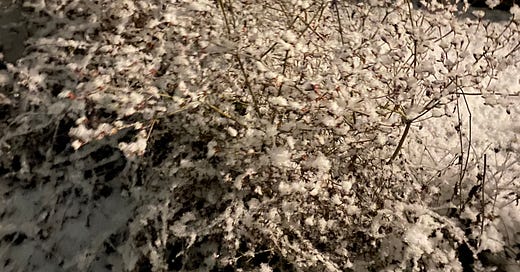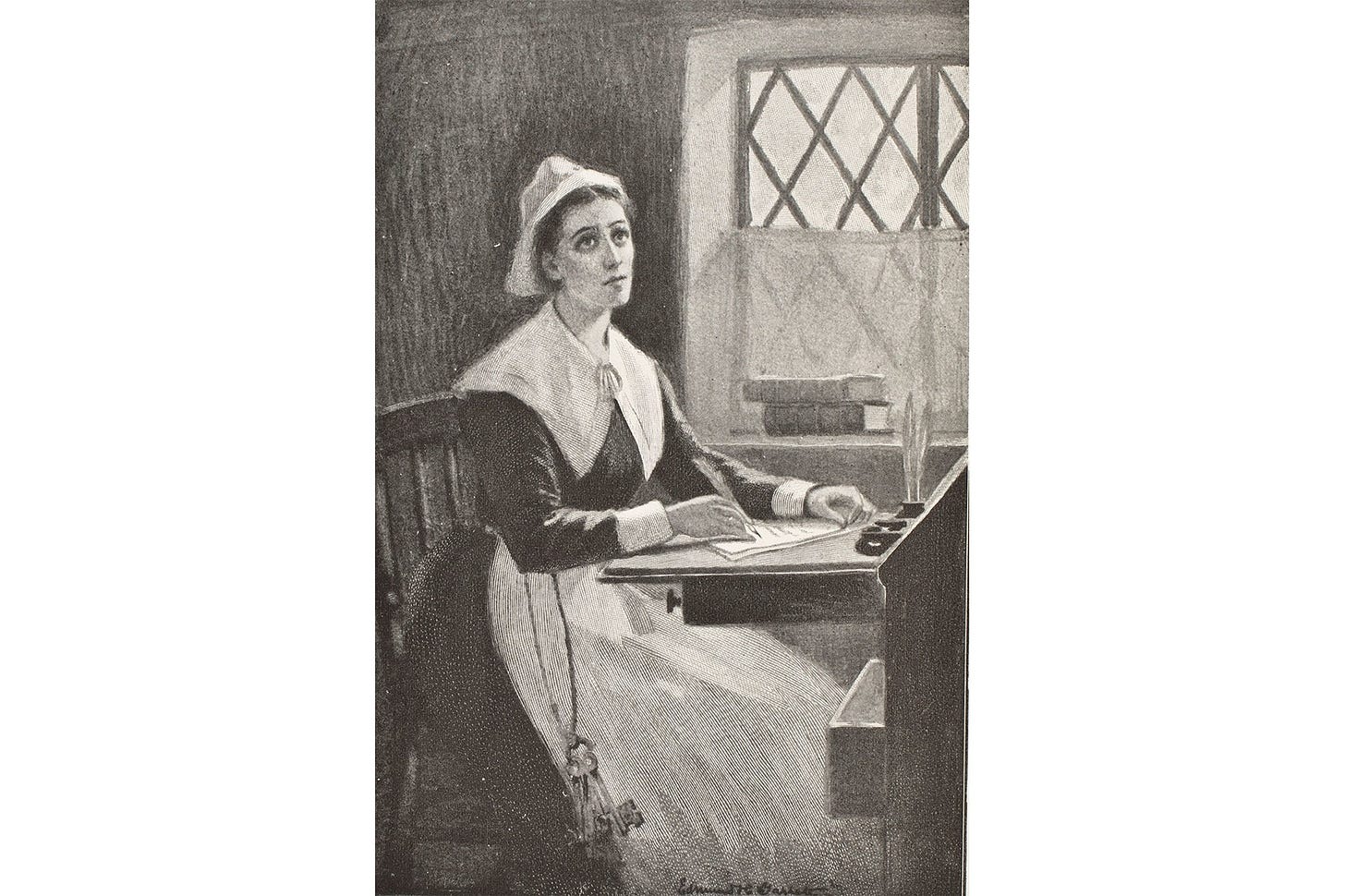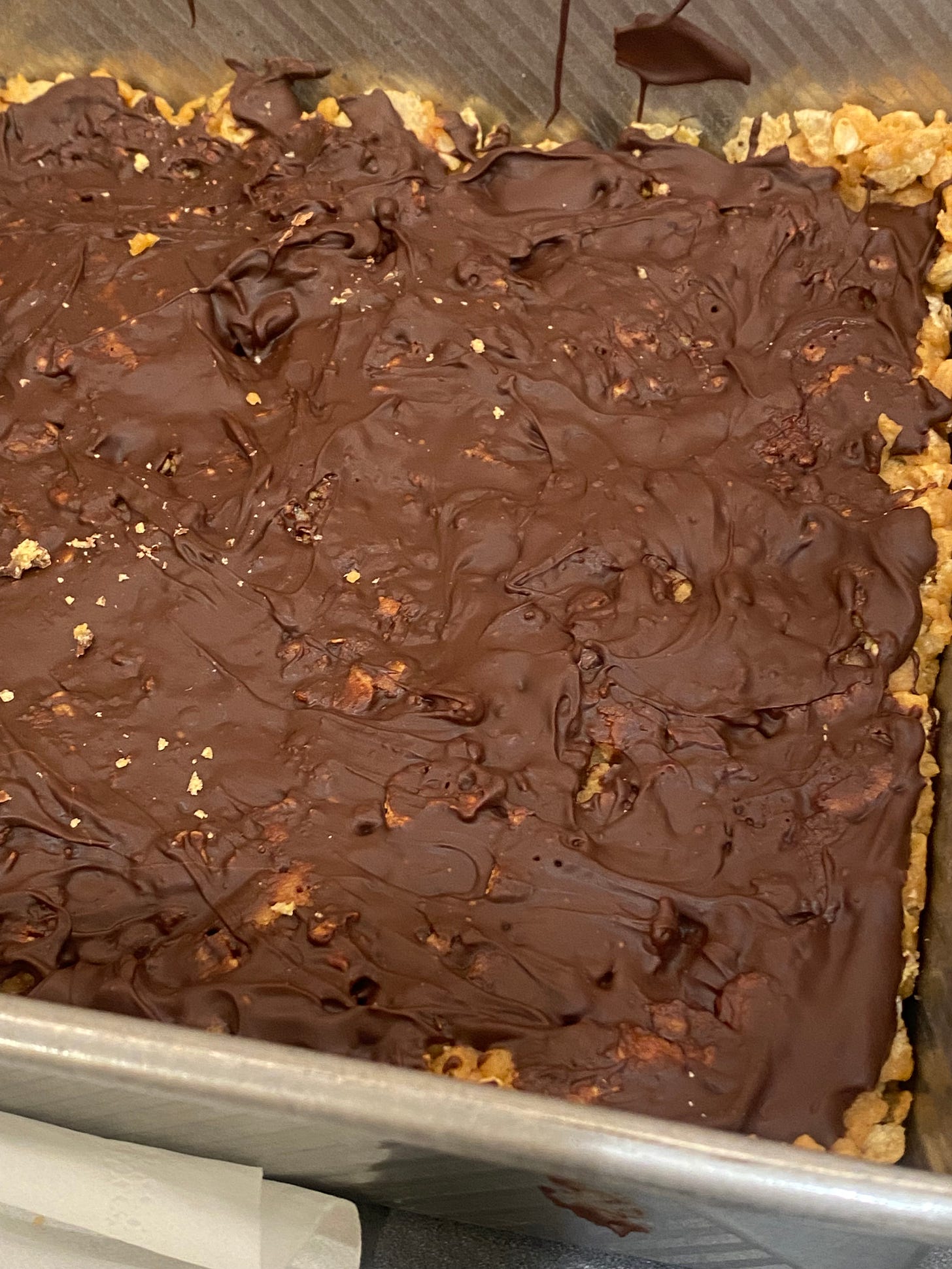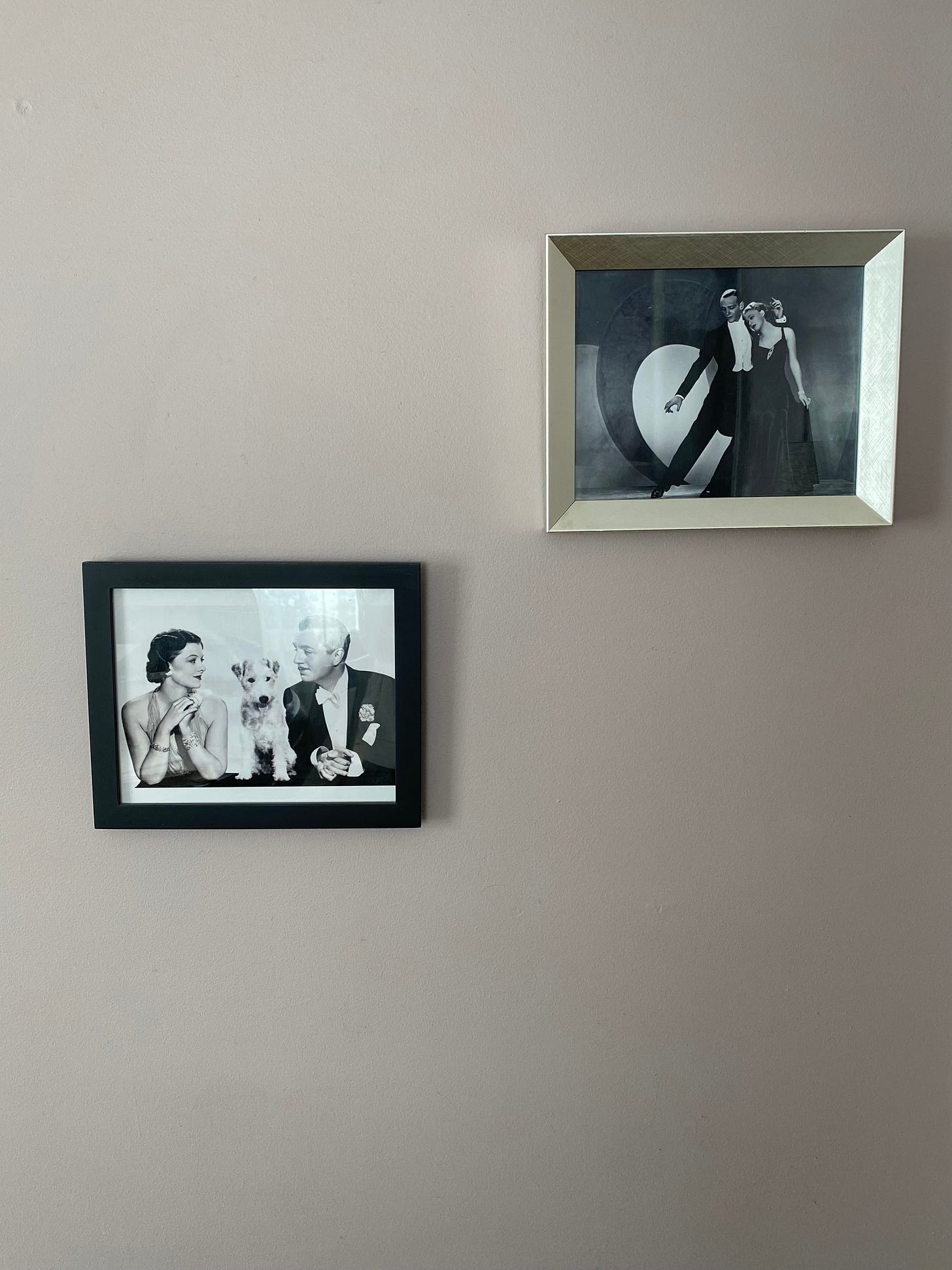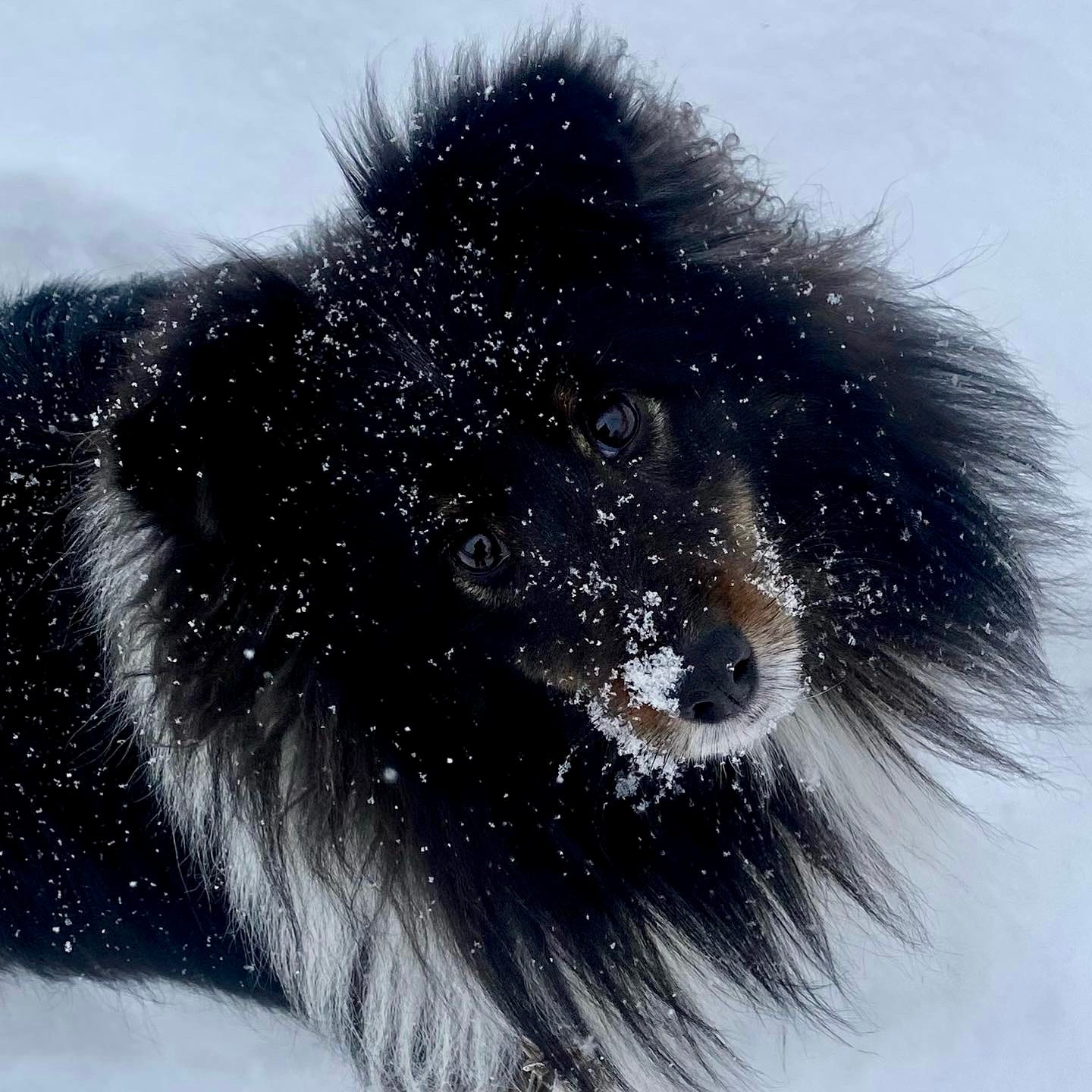First I began with the fussy snowy-rainy-icy-slushy day, the back-to-school day. I’ll tell them that, I thought. But I deleted most of it.
Then I began with these prompts, which the students in my ENGL 213 (poetry workshop) did on Day 1 and Day 2 and which you could do too.
Write a poem of no more than 10 lines that mentions
three things you saw/heard on the way to class, includes
one question you’ve recently asked or have been asked,
and uses the following words: bank, run, sweet, blue,
bargain, ache.
Write a poem of 10-12 lines that includes two sensory
details from your day, something you're an "expert" on
(knitting, procrastination, heartache, whatever), some
skill you'd like to have, an animal you'd like to be, and
one person who is on your mind today.[Why that length? Because we’ve got limited time and a thing under pressure has more power. Why those words? Because those are the ones that came to mind. I made ‘em up!]
But that beginning didn’t seem quite right, either.
Then I began by remembering how I truly began: “writing” this post out loud and then into my phone as I walked my dog Kip on the very day I sent along the last Cake & Poetry newsletter. That often happens: one post finally feels done and I think there’s nothing left to say for a week or two, but, no, there’s more, and right away, too, and it’s snowing in a gentle, encouraging way.
Beginnings/beginners need just this kind of encouragement, which is why I always tell my students that at the beginning of the semester it’s all on me. I’m responsible for setting us up for success and for setting the tone (we’re going to be cheerful! we’re going to be hard-working! we’re going to have fun! unexpected things are going to happen!). As the semester goes on, the students share that responsibility, and we all have to do our part. But Day 1, it’s on me.
And those Day 1 poems, will they be any good? Yes. They always are.
Plus, it’s my job, especially in these early days, to find something about each poem that is worthy of attention or that leads to a further question or that in some way makes the poet feel that the poem is on the right track.
*
Last time I mentioned that I’m teaching a grad poetry workshop focused on “beginnings and endings.” This week, we’re thinking about juvenilia, especially this poem by Sylvia Plath, written sometime before 1956 (Plath was born in 1932):
Bluebeard
I am sending back the key
that let me into bluebeard’s study;
because he would make love to me
I am sending back the key;
in his eye’s darkroom I can see
my X-rayed heart, dissected body:
I am sending back the key
that let me into bluebeard’s study.For juvenilia (and yes, I realize she was 24, but clearly Plath’s work was quite young), this poem is not bad. It’s fun to think about Bluebeard; the poem has some urgency; there are flashes of the power to come. But is this poem as good as Plath's more mature poetry? Heck no. And that’s kinda nice, actually. Reassuring for the rest of us. The poem has an idea and goes with it as far as it goes. And when there’s nowhere else to go, the poem repeats itself. Because the deep need is not yet on the page. The words sounds like poetry (I guess), seems like poetry, but, again, that’s a far as it goes. This is the kind of work that might yield a response like “cool!” or “creepy!” but is that enough? Not for me. Unable to go forward, the poem circles back. A better direction would be deeper into why the speaker needed to think of Bluebeard in the first place.
In contrast, consider these lines from “Morning Song,” which was written in 1961.
Love set you going like a fat gold watch.
The midwife slapped your foot soles, and your bald cry
Took its place among the elements.
Our voices echo, magnifying your arrival. New statue.
In a drafty museum, your nakedness
Shadows our safety. We stand round blankly as walls.
I'm no more your mother
Than the cloud that distills a mirror to reflect its own slow
Effacement at the wind's hand.The “wow” factor here is tied to a clear need/inciting scene, haunting sound work (Plath is a master of assonance), masterful heavy stress moments, lines that feel like they were cut from stone, bald statement, and a real flair for simile/metaphor. Oh, and as always she’s so good at establishing tone and shading it every so slightly this way or that.
You can read the whole poem here.
And if you want to time travel and think about American poetic beginnings, how about this very relatable poem by Anne Bradstreet. Last minute, I agreed to teach an extra class, ENGL 343: American Poetry. We’ll be reading all greatest hits of American poetry, those poems that inspire and reward re-reading. Bradstreet (1612-1672) has been a bit of a hit this semester. So too has Edward Taylor (1642-1729), whose “Upon a Spider Catching a Fly” was deemed “very death metal” by one of my students. Another student observed that if you’re determined enough, anything can be a metaphor for religion. It’s moments like this that make teaching so much fun.
It’s also pleasing to come across this very lol portrait of Bradstreet by artist Edmund H. Garrett. What writer (or anyone, for that matter) has not felt like this??
We get it, Anne, we really do.
Back to school and all this talk of beginnings prompted me to make one of my all-time favorite recipes from my mom: Special K Cookies. I don’t know many recipes by heart, but luckily I do know this one. “Luckily” because the original recipe is long gone (newspaper clipping? back of the cereal box? don’t know). If you like peanut butter and chocolate, you will probably like Special K Cookies.
These cookies truly are easy-peasy.
Combine 1/4 cup corn syrup + 1/2 cup granulated sugar
in a saucepan/medium pot over medium heat. Stir, stir,
stir until the mixture is smooth/opaque/heading toward
clear-ish. Then add 3/4 cup of creamy peanut butter,
mix well, and turn off the heat. Add 3 cups of Special K
cereal. Stir it in and then dump the whole mixture in a
square pan. Press down with the back of a spoon.
Next, either on the stove or in the microwave, melt some
chocolate. I use semi-sweet, but you could use milk or dark
or a combo. How much? A cup? I don't know. You can always do
more. I don't want a skimpy chocolate coating. After all,
we've already added corn syrup and sugar; this is no time to
fret. Just melt the chocolate and pour it over the cookies
and spread to the edges and do as much as you like!
Then pop the Special K's into the fridge to harden up.
Ta-da! That's it. A real old-time-y cookie. Reminds me of
childhood. Sooo good.
I am definitely a beginner when it comes to weaving, which I discovered at the start of 2023 and which really speaks to my 1970s Holly Hobbie vibe.
Writers need a break from words, and weaving, gardening, cooking, baking — all these things provide that break for me. It feels good to touch stuff. Know what I mean?
I have a couple of looms, one from Spruce and Linen (my first source of info about weaving: great videos!) and one from Funem Studio (which is in Belgium — yay!— I am Belgian!). More about both of those in a future post, but this time I had the great fun of doing my first round weaving. The materials were from Ashton Zager Fiber Art. She also provides really good video instruction.
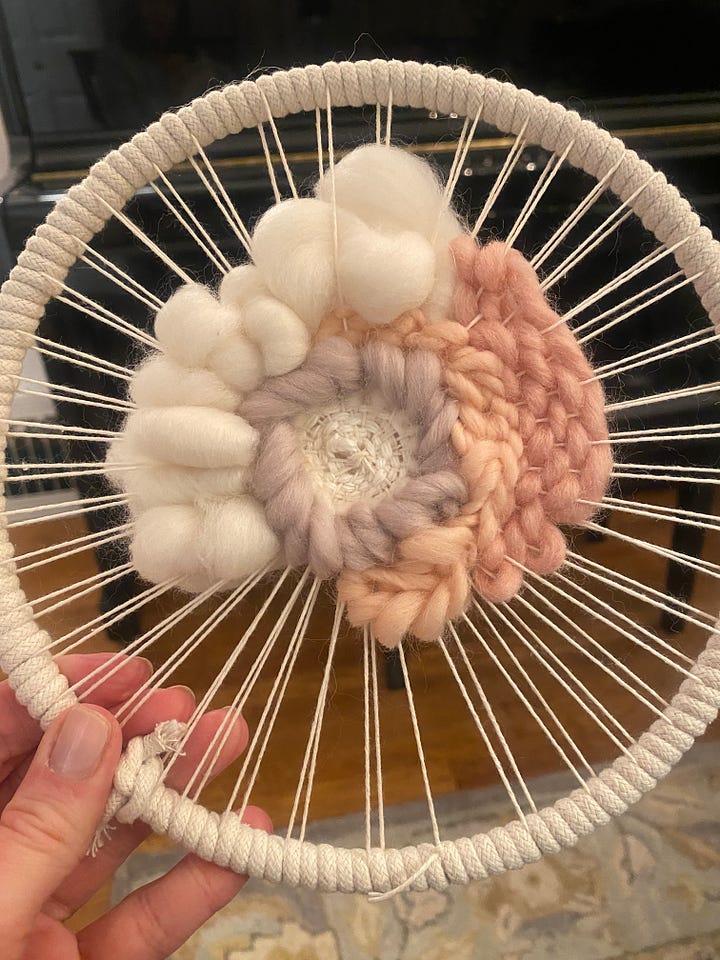
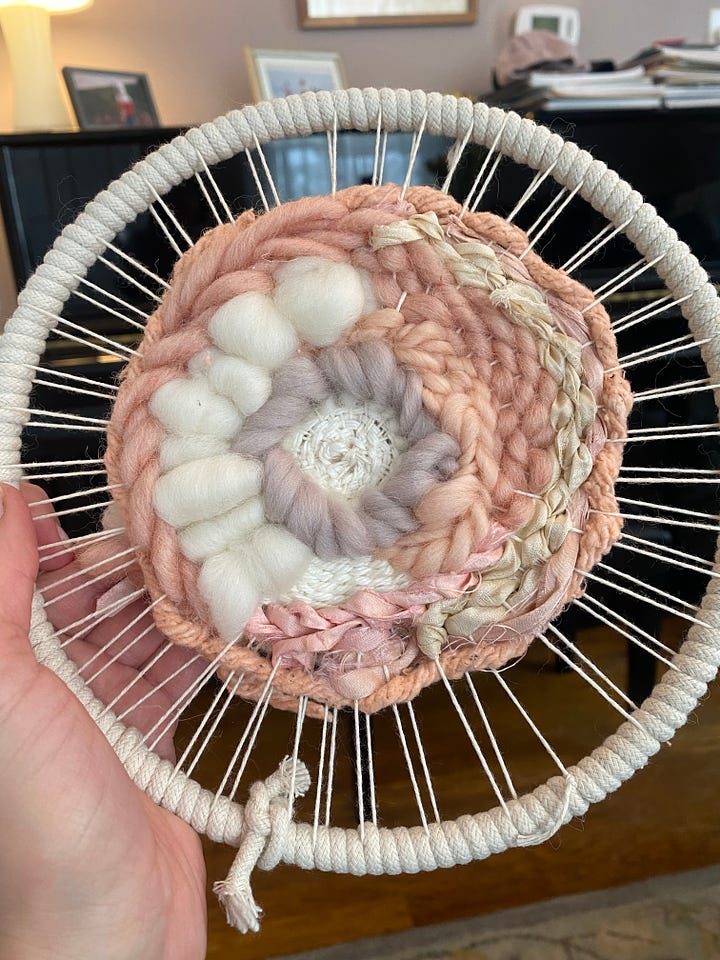
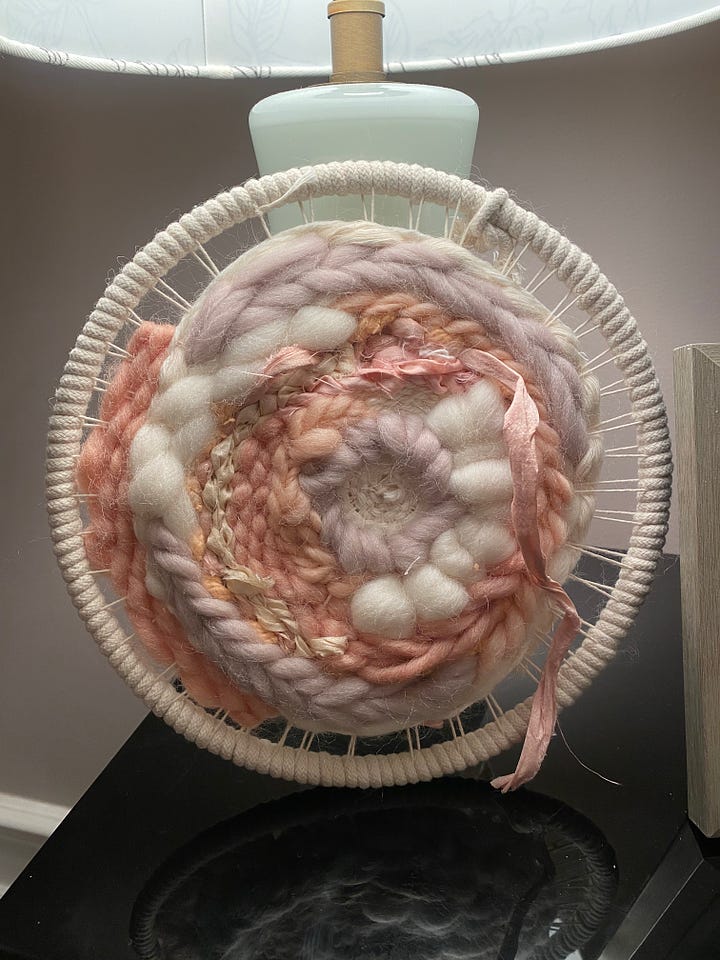
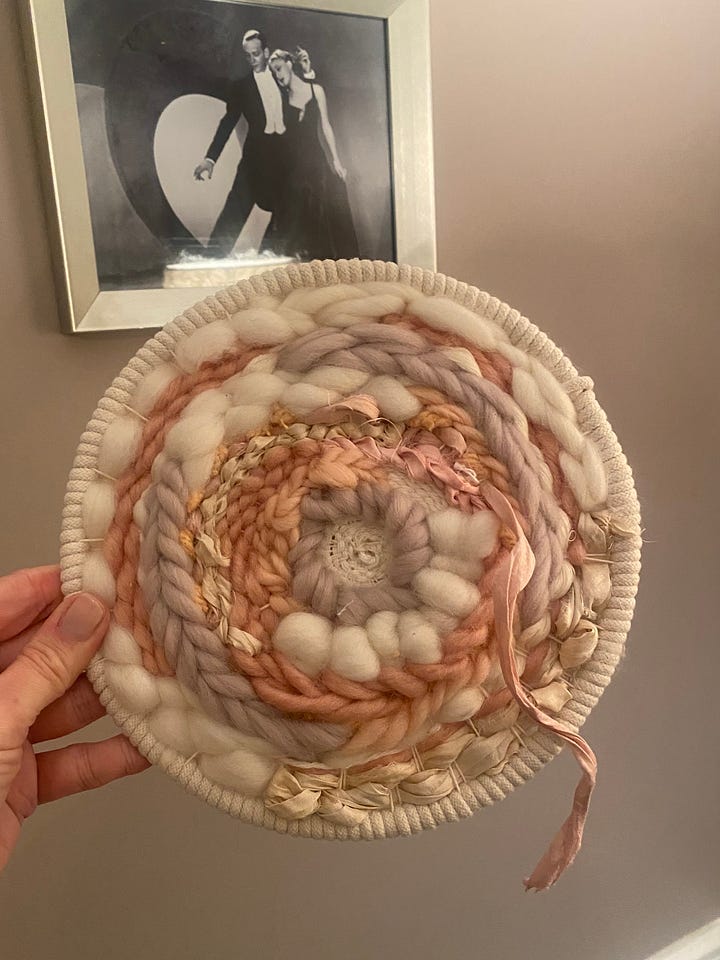
I love how improvisational weaving can be. I don't want to follow directions or endlessly refer back to a pattern. It’s ok to make mistakes, to un-weave, to let the homemade be homemade.
And as for the dangling bit? Yeah, I find I tend to that. I guess it’s my thing.
In that last photo, you can see just a bit of a photo of Fred Astaire and Ginger Rogers in Top Hat. When I moved into my house, my friend Carol gave me this photo and one of Myrna Loy and William Powell in The Thin Man. My house was built in 1935, and both movies are also from that time. I aspire to give gifts this good.
So, that’s January, I guess: lots of beginnings. And I’m still at the beginning of Cake & Poetry, too, and still sorting out its “house style.” First I did the titles one way (a list); now I seemed to have moved to something shorter, more all-encompassing. Also, I said I’d end each post by giving a thought about poetry or teaching, but, turns it, weaving (no pun intended) those things throughout works better for me.
All of which is to say, the beginning lasts awhile. Longer than you think, maybe. And has its own twists and turns. And then it’s over before you know it? Something like that.
Reading War and Peace has also felt like an extended beginning; I very much feel the little car of the roller coaster still going up and up, my whole body pitched back. Is this safe?
Or, better metaphor because I don’t like rollercoasters, so far, reading War and Peace has felt like looking at a giant painting, one that covers an entire museum wall. Sometimes I’m crouched in one corner; sometimes I’m climbing on a ladder; all the time looking at whatever little bit Tolstoy directs me to. It’s fun, I look forward to reading every day, and that’s not nothing, especially in January.
What about you? Is your January snowy? Ours is. Polly is a big fan. She loves a sno-cone, and she’s an excellent canvas for snowflakes.
We hope you’re finding ways, indoors and out, to make a fresh start, or begin again, or simply enjoy January. As always, thank you for reading. More soon!

